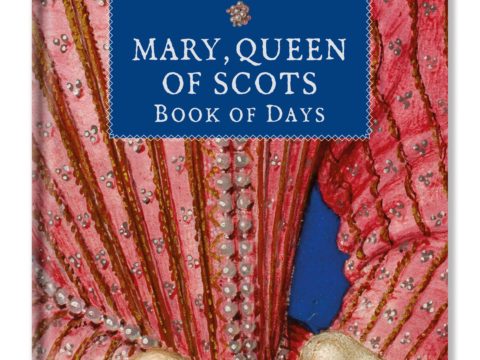Jasper Tudor: Dynasty Maker
Terry Breverton is the author of a wide range of books with topics as diverse as pirates, herbals and the First World War. His specialism, however, is Welsh topics, and his comprehensive research into the Welsh experience of the Wars of the Roses, and the reaction of Wales to calls from both Lancastrian and Yorkist kings gives a whole new perspective to the conflict. Breverton concentrates on the life of Jasper Tudor, second son of Queen Katherine de Valois by her second husband, Owain Tudor. Jasper was one of the few men present at both the opening battle of the War (St Albans in 1455) and the final confrontation at Stoke in 1487.
Jasper, like his older brother, Edmund, received recognition and a generous endowment from his half-brother, Henry VI. Breverton looks at Jasper’s early career and discovers that, during the 1440s and 1450s, far from being a blind partisan of Henry’s inept government, he was on good terms with Richard of York, and sought to support York’s attempts to improve government. It was not until the Yorkists took up arms against the King that Jasper firmly committed himself to fight for his half-brother.
Breverton has undertaken extensive research into the government offices and landholdings in Wales, and how they changed hands over the course of the wars – he identifies three great power bases – Jasper’s own, which he continued to control to a degree until the defeat of the Lancasatrians at Tewkesbury in 1571; that of William Herbert (or Gwilym Du, ‘Black William’, in his native Welsh) and that of Rhys ap Thomas.
Herbert was originally part of Jasper’s own affinity, but shifted his allegiance to Edward IV, and was rewarded with Jasper’s earldom of Pembroke. He also became the guardian of Jasper’s nephew, Henry Tudor. Even more than in England, the personally loyalty of men to their lord affected their willingness to fight for the lord’s chosen side. Nowhere is this more clearly shown than in the reaction of Wales to the revolt of the Duke of Buckingham against Richard III in 1483.
Buckingham, although he had been granted wide-ranging powers in the country had little or no personal following among the Welsh, who largely ignored the uprising. It was a different story when Jasper and Henry Tudor arrived in 1485 – the Herberts, who were Yorkists made no attempt to prevent his march, Rhys ap Thomas, who had been a Yorkist actively supported him, and the northern counties of Denbighshire and Flintshire, under the leadership of the Stanleys also fell in behind the Red Dragon banner.
Breverton makes use of a wide range of Welsh bardic and literary sources – which, although less well known, are not necessarily more, or less accurate that the English sources despite often being written in poetic style, rather than as factual accounts. The language used in them illustrates pent up anger in Wales against the conquest of the country and the vicious penal laws enacted against Owain Glyndwr at the turn of the fifteenth century. The prophesies of a Welshman who would free them from the Saxon yoke was a dream that many could follow. Had Henry and Jasper landed in England they would have been far less likely to gather the number of troops they did before crossing the border.
Following the victory at Bosworth for which Henry VII could thank Jasper, and that other Lancastrian stalwart, the Earl of Oxford, Jasper was the only man granted a dukedom and was showered with land (including Sudeley Castle) and offices from his grateful nephew. He was also granted a wife, connected to the family of Edward IV. Katherine Woodville, widow of the Duke of Buckingham, was in her late twenties, compared with Jasper’s fifty-four, but the fact that she was aunt to Elizabeth of York, whom Henry had vowed to marry, strengthened the relationship between the formerly warring factions. At no time does Breverton speculate on Jasper’s private life (fifty-four being extremely old for a noble to marry for the first time in the fifteenth century). He mentions the theory that Jasper had been in love with his sister-in-law, Margaret Beaufort, but suggests that the most likely reason is that the Wars of the Roses had begun before a suitable bride had been found, and that Jasper had not had time subsequently to marry. Marriage to Katherine was also a way of providing Jasper with a very fine income as the Duchess’ dower rights (confiscated by Richard III) were returned.
Breverton’s interpretations of Jasper’s character are limited to observations where he believes he has direct evidence – he contends that Jasper was of a conciliatory nature and encouraged Henry VII to seek reconciliation with the Yorkists rather than another round of blood-letting, citing the easy terms given by Jasper to the adherents of Francis Lovell’s rather lack-lustre rebellion in early 1486.
Jasper’s final years as Henry’s most trusted advisor (except for Margaret Beaufort) are covered – including his final military command – an expedition into France that ended with a peace treaty. He also acted as deputy for the infant Arthur, Prince of Wales in the Council of Wales, based at Ludlow.
I really enjoyed this book – the wealth of detail, the Welsh perspective – so little considered elsewhere – and, in good Welsh fashion the minutiae of familial relationships between the various men of Jasper’s affinity. I have only one negative comment – the book is long, and there is very frequent repetition of the same fact, even the same sentence over several pages. A good edit would remove these annoyances, and make the narrative flow more tightly.
Tudor Times received a review copy of this book from the publisher.
This article is part of a Profile on Jasper Tudor available in paperback and kindle format from Amazon.
Listen to our interview with Renaissance English History Podcast on Jasper Tudor here.



